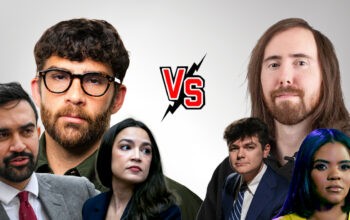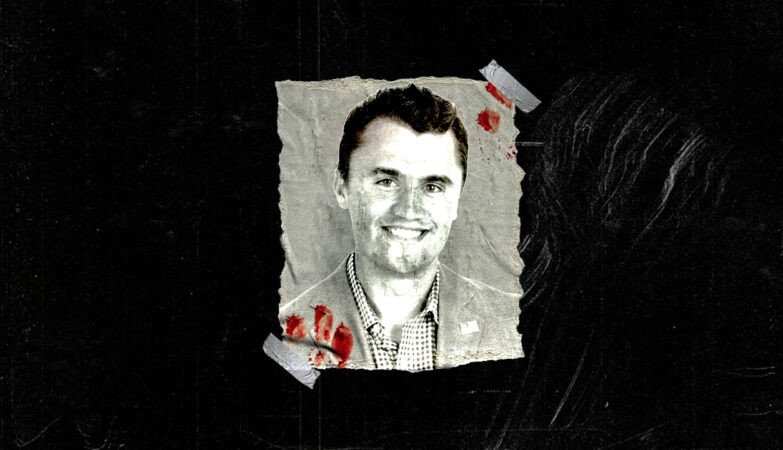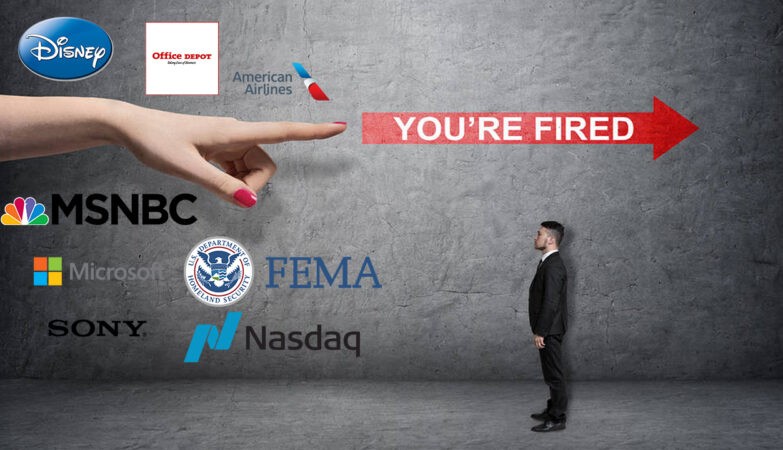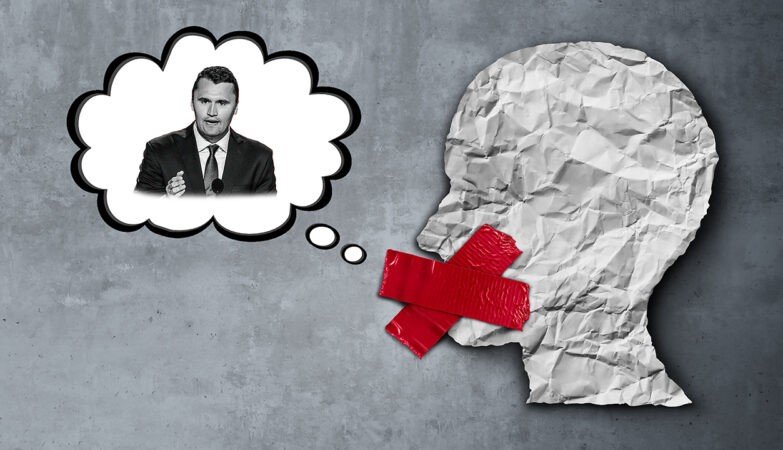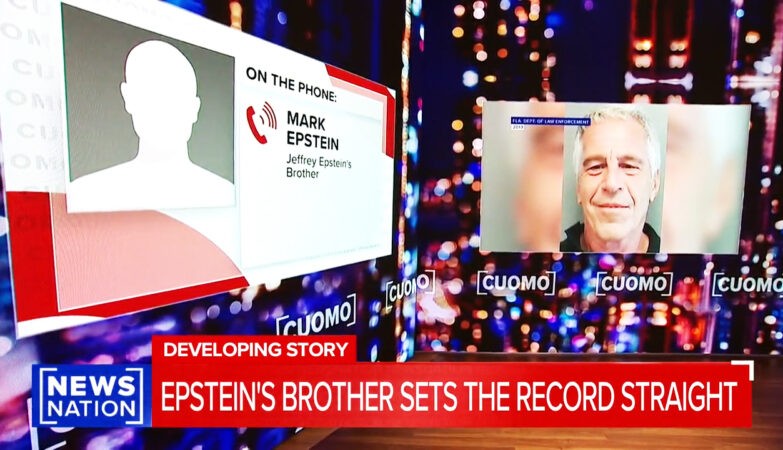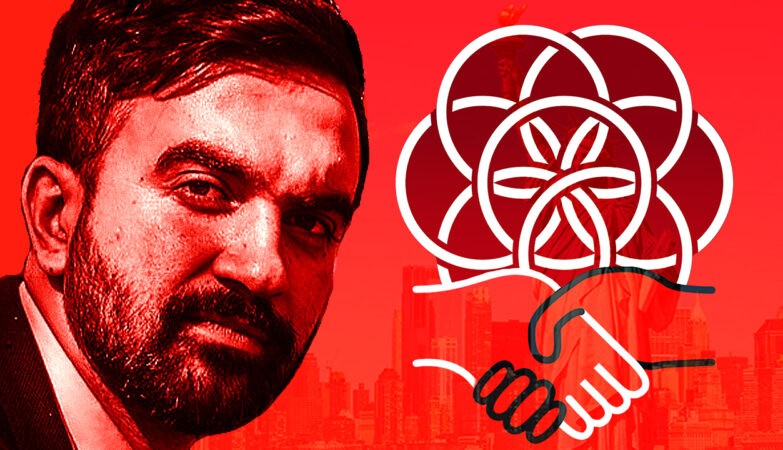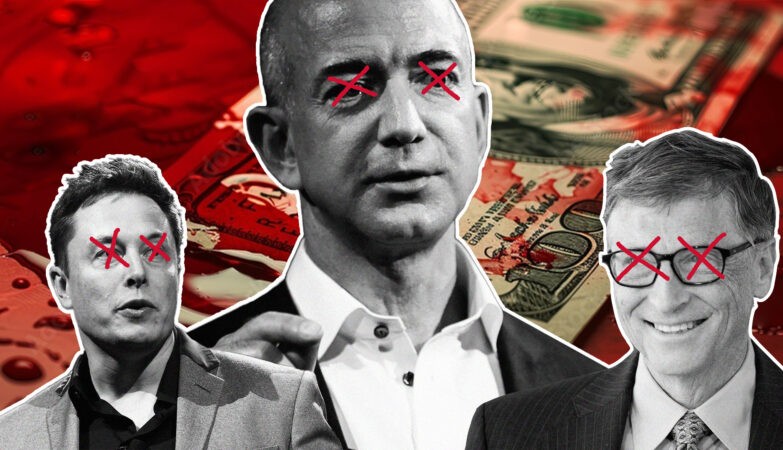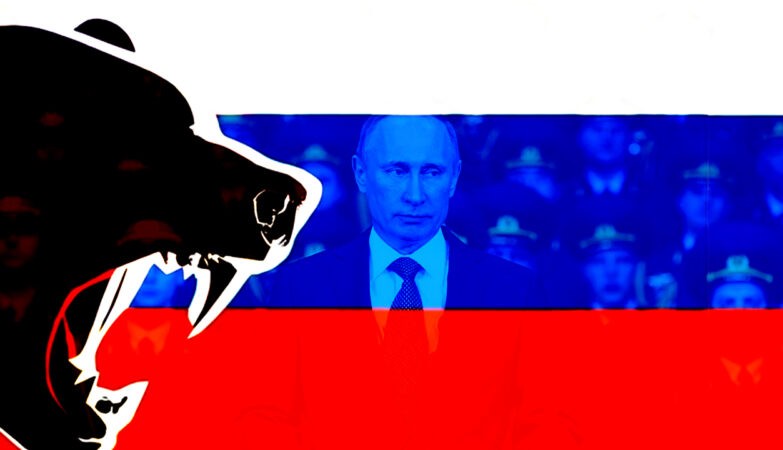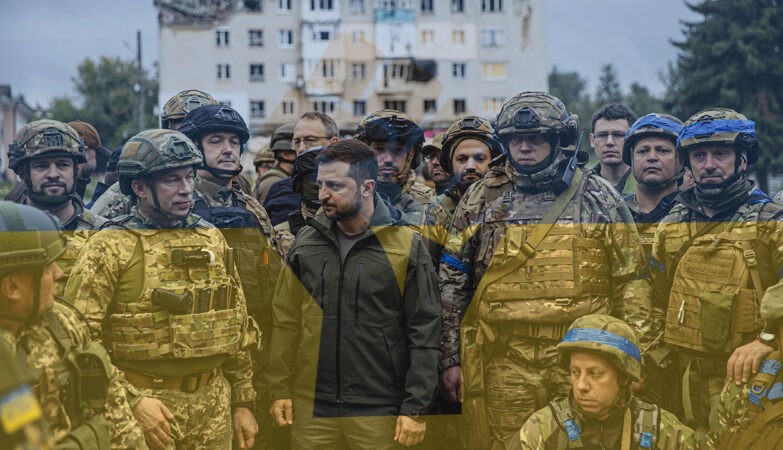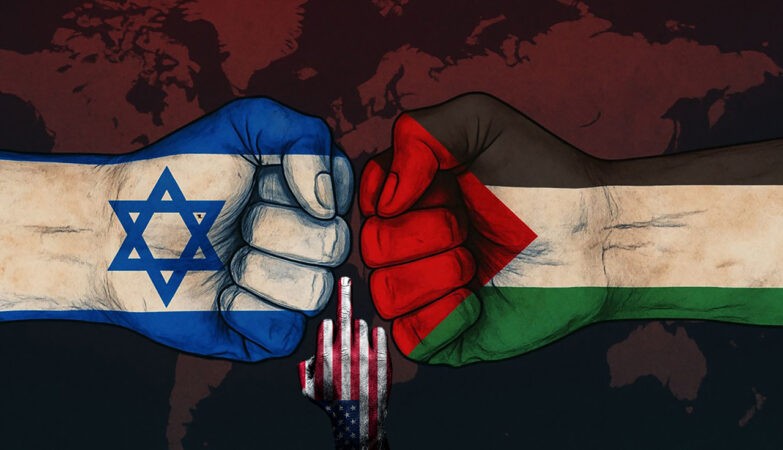The Biden regime gets closer to being a dictatorship every single day. As patriots hear the jackboots stomping on the street, we can only wait and prepare. This government is not American. This government hates our Constitution. This government does not want private property or basic liberties.
Need proof? Take the so-called “vaccine” for COVID. Biden is going far beyond just pressuring people to get it. Aside from his mandates, he’s now saying he’ll stop funding large areas of society until people cave in and take the shot.
I wish I was joking.
What Is Biden Threatening to Do?
Biden is saying he will not fund various nursing homes, colleges and recreational facilities with federal money unless more people get the vaccine. One strategy is to withhold Medicare money in order to force workers at care homes and other similar locations to all get shots or else face serious deficiencies and issues at their facilities.
New York Governor Andrew Cuomo already killed thousands of elderly folks by forcing nursing homes to take people with COVID; why not continue on that tradition by starving old people of funding to pressure more vaccination?
Federal workers are already about to be legally required to all get the vaccine. Here are the numbers: around 90 million Americans don’t yet have a vaccine. Biden wants them all to get a vaccine, and he’s clearly willing to push beyond the legal limits to achieve it.
Joseph R. Biden Is a Dictator
Let’s say it loud for the people in the back and so they know we’re not joking: Joe Biden is a dictator. True, he’s not started opening up camps yet, as far as we know, but all the other signs of a dictatorship are there.
Should I count the ways? Massive censorship, show trials and prosecution of political enemies from the Jan. 6 protests, forced vaccination and destruction of private property rights by way of the eviction moratorium.
There much more: forcing extreme leftist ideology through the education and federal workforce, use of division to cement control, and destruction of individual liberties including the right to leave home and the right to make medical decisions.
I’ll say it again: Joe Biden is a dictator. Furthermore, his staff admires dictators; a recent senior adviser showed her true colors by rating Chinese mass murdering Communist Mao Zedong as one of her “favorite” politicians.
We are deep in the danger zone, folks.
“I have this strange notion, we are a democracy … if you can’t get the votes … you can’t [legislate] by executive order unless you’re a dictator. We’re a democracy. We need consensus.”
Those are the words of Joe Biden. And, no, this isn’t a matter of unearthing a clip from the 1980s or ’90s in an attempt to play a game of gotcha on some antiquated flip-flop. That’s Democratic nominee Biden, less than three weeks before the 2020 presidential election, talking to ABC News’ George Stephanopoulos about the dangers of governing like a dictator.
In President Biden’s first week alone, he signed 37 executive orders and actions. That’s 33 more than the guy he indirectly referred to as a dictator, in the form of predecessor Donald Trump. It’s 32 more than his old boss, Barack Obama, and 37 more than George W. Bush, who signed zero in his first week as president.
“With unity we can go do great things, important things,” Biden said during his inaugural address. “Unity is the path forward. We must meet this moment as the United States of America. We’ve never failed in America when we’ve acted together.”
“Without unity, there is no peace, only bitterness and fury. No progress, only exhausting outrage. No nation, only a state of chaos. This is our historic moment of crisis and challenge, and unity is the path forward,” he also said, in a speech lauded by those on both sides of the political aisle.
Even the New York Times editorial board is calling on the president to pump the brakes on governing exclusively by executive fiat.
“Ease Up on the Executive Actions, Joe,” reads the Thursday headline. “President Biden is right to not let his agenda be held hostage, but legislating through Congress is a better path.”
But Biden’s deeds, with more than three dozen executive orders and actions, simply have run in direct contrast with his words of unity and compromise. That’s a nice way of saying that, at least so far, everything the president promised regarding working with the other side has been utter nonsense – particularly when considering that his party controls the House of Representatives and the Senate.
If history is any indication, most executive orders derive from a president’s thirst to bypass Congress. And on Day 1 of the new administration, as a specific microcosm that underscores this point best, the Biden team – in a rush to satisfy the thirst of the party’s left-of-left flank – decided to shut down expansion of the XL Keystone pipeline and the 11,000 full-time and temporary jobs that went with it.
He did this during an economic crisis. With jobs already at a premium.
Multiple unions that endorsed Biden, including the Teamsters, expressed their dismay with the unilateral decision by the president.
“The Teamsters strongly oppose yesterday’s decision, and we would urge the administration to reconsider it,” said Teamsters head Jim Hoffa upon hearing the news.
In a related story, Russia and Venezuela benefited nicely from a Keystone-less U.S. in filling the energy void, while China was quite pleased that the U.S. rejoined the Beijing-friendly Paris climate accord, which was among the 37 executive orders and actions signed.
Biden was never asked any direct questions by the press on the job-killing Keystone order, of course. That’s what happens when the leader of the free world requires a staffer to call on a predetermined list of invariably friendly reporters, compiled by his team, instead of calling on reporters himself.
How friendly? Here’s a “question” around the topic of unity posed to him on Tuesday. “Given that unity is such a key part of your message and your promise, can you talk and reflect a little bit more about what is unity when you see it and as you define it?” asked Washington Post White House correspondent Annie Linskey, one of the six reporters permitted to question the new president in his first press conference.
Note: Whenever anyone in power is asked to reflect or define anything, it’s an exercise of offering up not just a softball but a beachball to the person on the receiving end to knock it out of the park.
“Unity also is trying to reflect what the majority of the American people – Democrat, Republican, independent – think is within the fulcrum of what needs to be done to make their lives and the lives of Americans better,” Biden answered.
Ultimately, most executive orders stem from a president’s desire to bypass Congress. Biden’s actions are the opposite of someone who preaches compromise, something a majority of the Democrats, Republicans and independents ultimately want but likely won’t get with this administration.
President Biden’s actions show he isn’t terribly interested in what more than 9-in-10 Americans still undoubtedly want.
“You can’t [legislate] by executive order unless you’re a dictator,” the 2020 version of Joe Biden said three months ago. That guy should say hello to 2021 Biden sometime and ask what exactly has changed since his pre-election remarks.
The Bottom Line
The bottom line is that we no longer live in a free country. The Biden regime is determined to chase all patriots into a corner and starve them out. This isn’t about vaccines, “hate speech” online, or any of the things that Democrats say it’s about.
It’s far simpler than that: this is about protecting the Constitution and defending American against a hostile regime who is determined to turn this country into Communist China.
The Necessity of Violence for Real Change
You should read Lance Hill’s The Deacons for Defense: Armed Resistance and the Civil Rights Movement. Gives a compelling argument that, despite the revered narrative, nonviolence as a tactic wasn’t particularly successful, and violence and the threat of violence were absolutely essential to the changes that took place. SNCC’s peaceful local organizing in the early ’60s actually didn’t bring about many real, tangible gains: months-long campaigns that succeeded in registering minuscule numbers of voters. Intractable white power-structures, racism, relentless Klan violence; King’s “moral suasion,” his hopes to shame Southern whites out of racism, failed utterly. In the end the activists had to turn to the coercive power of the federal government. But the government refused to act for years: nonviolence, numberless complaints submitted to the Justice Department, moral appeals, didn’t bring about legislative reform or enforcement of the laws.
Finally in 1964 things were threatening to get out of hand, with riots and some white deaths, so the government was able to pass the Civil Rights Act — and enforced it only sporadically, usually when compelled to by violence or its threat. The Deacons, who didn’t eschew violence, were in some respects far more effectual than SNCC. They also did more to restore dignity and pride to working-class black men (think of Frantz Fanon), many of whom saw nonviolence as just a continuation of age-old submissiveness and an excuse for Southern whites to persist in their views of blacks as children and cowards. By fighting back, blacks forced local whites to take them seriously.
Nonviolence was a useful tactic for getting white liberal support, but without the threat of black violence always lurking in the background it would have accomplished little. (“One of the great ironies of the civil rights movement was that black collective force did not simply enhance the bargaining power of the moderates; it was the very source of their power.”) After all, states are not moral agents, to quote Chomsky, that can be swayed by moral suasion; they are power-structures that respond to attacks on, or threats to, their power. In the end, even the reforms of the civil rights era did little to materially improve the situation of most blacks, blacks in ghettos, in rural poverty; they were better for the middle class. (It’s the old revolutionary pattern of poor people doing most of the real work and middle-class people, in the long run, getting most of the rewards.)
Pacifism is admirable but wrong, at least if you want change. For that you have to look at tactics, not adhere blindly to principles.
A Real Leader
If you think that the mobbing of Charles Murray at Middlebury College in early March was the final stage of campus bullying, especially after denunciations came from conservatives and liberals alike, you missed the events at Claremont-McKenna College in April, 2017. People who came to hear Heather Mac Donald, who argues that the excessive scrutiny of policemen has led them to back off from their work and thus has increased crime levels, couldn’t enter the building. Protesters screamed at and pushed them, also threatening bystanders and journalists if they got too close. Heckling the speaker wasn’t enough. We saw full-on intimidation of anyone interested in the event.
Meanwhile, in the northern part of the state, a decision was made that tells us indirectly how we must respond to these actions. The student government at University of California-Davis voted to make the American flag display optional at future meetings. Some of the members didn’t like the flag. As one of them put it, “The flag to a lot of people represents capitalism, colonialism and the genocide of indigenous people, and this is why we don’t want the flag in meetings.”
From now on, members who do honor the flag must petition the body 24 hours in advance in order to request the flag’s presence in the proceedings.
When they took that vote, did they think about the men and women who fought and died beneath the flag? Of course, the backers of the “optional” proposal had other American actions in mind — Vietnam, Jim Crow, the Wall — but in renouncing the flag, they include the sacrifices American soldiers and peace officers have made in defense of the very freedoms and prosperity the students themselves enjoy.
This is more than just a historical fact of America’s fight against fascism, communism, and, on the Union side, slavery. It is also a principle of civilization. The principle is this: You cannot maintain civil order, if people don’t realize that if they cross certain lines, violence will be done to them. If you break the law, you will be arrested and confined. If you resist, worse will happen. This is the guarantee of a functioning society.
Which brings us back to the hooligans at Claremont and Middlebury. They don’t see themselves that way, of course. They think their shut-down, back-off tactics are morally justified by the abominable nature of their antagonists. They refuse to accept the results of the election (“Not my president!”), and they deny admission of conservatives to any public sphere they control. We cannot expect them to draw down because of poor news coverage and sharp criticism. Certainly, the feeble pledges of investigation issued by administrators don’t faze them one bit. They are impassioned, and it will take a lot more than censure and persuasion to make them stop.
A ludicrous inversion has taken place. The speech of Charles Murray, Heather Mac Donald, and other conservatives whose ideas cross the race taboos of the left are claimed to be violent. It is now one of the truisms of identity politics that words can hurt. As Toni Morrison said in her 1993 Nobel Prize speech, “Oppressive language does more than represent violence; it is violence.”
So free speech by conservatives is violence. On the other hand, the left’s real violence is free speech, and when the police arrest protesters who intimidate attendees, block entrances, and shout down lecturers, they’re interfering with free speech rights. As a Middlebury professor and two alums said at Inside Higher Ed after the affair, “If free speech can justify a platform for Murray, it also justifies students talking back.” The ridiculous understatement of the words “talking back” shows how distorted the perspective of the angry campus left has become.
The solution is clear. The next time the protesters commandeer public grounds and threaten innocent citizens, they must be seized, immobilized, and carted away. Until that happens, the upheavals shall continue.
If they do, specific campuses and speakers will not be the only casualties of the protesters. Every fair-minded person, not to mention law-abiding patriot, finds these scenes of unpunished rampaging profoundly demoralizing. When you watch the mobs at work and the authorities seemingly powerless to contain them, your faith in America wanes. It violates a deep sense of right and wrong. You waver between fury at the obscenity-shouting, arm-locking 20-year-olds and despair for the future.
We need a political leader to step forward and cry, “Enough!” Gov. Ronald Reagan did so at Berkeley, calling in the troops and clearing the grounds. It made him a hero and launched him to the White House. Donald Trump, too, showed that leaders can face down the protesters and win. Who else has learned the lesson?
The Necessity of Violence for Indian Independence
The critical role that violent outbreaks of rebellion played in the Indian Independence Movement is too often overlooked. In fact, by the 1940s violent rebellion had become the rule rather than the exception in India.
Whenever politically-minded people discuss social change–particularly Western liberals–I find that there is an unfortunate tendency to fetishize non-violence, and demonize any and all acts of violence that are undertaken in the name of progressive and revolutionary principles.
One popular example used to uphold the ideal of non-violence is Gandhi’s role in the Indian Independence Movement. The short and simplified narrative states that Gandhi was able to rally the masses with peaceful, non-violent tactics, and thus we in the modern world today should be able to do the same in order to create progressive political, economic, and social change. But a cursory historical analysis quickly demolishes the idea that Gandhian non-violence was sufficient to drive the British out of India. While Gandhian non-violence was certainly instrumental in creating a unified independence movement, it was ultimately the threat of widespread violent insurrection that eventually toppled the British Raj.
Quit India 1942
The Quit India movement, launched in 1942 by Gandhi and other Congress leaders, is perhaps the best example of the successful use of violence in the Indian Independence Movement–notably because it was endorsed by Gandhi himself. The movement saw widespread insurrectionary acts across India, with the participation of millions of common people. (Read a more in-depth account of the Quit India Movement, its context, and its impact here). Government buildings were bombed, trains were sabotaged, and mass strikes paralyzed the economy. Mobs dragged officials out from their homes and killed them; police stations were burned to the ground. The British counter-attacks were even more brutal; troops indiscriminately razed neighborhoods and raped women in “troublesome” villages. By the time the rebellion had died down, 763 Indians and 63 British police and troops had been killed, and 1941 Indians and 2012 British police and troops had been injured (Hutchins 1973: 230-31).
The rebellion was eventually quelled, and failed to drive the British out immediately. However, it was one of the defining events that shifted British perception of their level of control over India. The historic level of rebellion made it clear that India was rapidly becoming ungovernable, and that if the British attempted to hold on much longer, they would face even more violent upheavals.
The Indian National Army
In parallel to the mass mob violence of the Quit India Movement, a traditional military campaign was being fought by Indian nationalists. From 1942 to 1945, the Indian National Army (INA)–a group of armed militants whose members consisted of recently freed Indian POWs and Indian expatriates living in South-East Asia–was engaged in guerilla warfare against the British, and steadily pushing its way toward India. It was lead by Subhas Chandra Bose, a renowned leftist leader, and whose advocacy for violent revolution against the British occupation put him in direct opposition to Gandhi and his followers. Funded by an alliance of convenience with the Germans and the Japanese (who were eager to fund internal instability in the British Empire), Bose’s plan was to fight his way through South-East Asia, invade India, and overthrow the British Raj.
Like the Quit India movement, the INA was to be unsuccessful as well. By 1945, the Allied campaign against Imperial Japan in South-East Asia had defeated the INA and captured many of the would-be revolutionaries. Bose was killed in a plane crash while attempting to flee to the Soviet Union. However, despite the military defeat, the impacts of the INA’s efforts for Indian liberation shook the stability of British rule to its core; popular riots in support for the freedom of INA’s soldiers began breaking out across the Indian sub-continent, and the atmosphere was insurrectionary–rejuvenating the spirit of the Quit India Movement. The name of Subhas Chandra Bose was on the lips of millions. Even Gandhi declared that “the hypnotism of the INA has cast its spell on us.” The amount of violent unrest, and the upsurge of passion for independence, was unprecedented in the history of the sub-continent.
The Royal Indian Navy Mutiny
Arguably, the final straw that broke the British camel’s back was the Royal Indian Navy mutiny of 1946, a general strike and revolt by Indian sailors that eventually involved over 20,000 sailors, 78 ships, and 20 shore establishments. The general sentiment of militancy in India due to the ongoing trials of the INA soldiers, served to escalate a disagreement between the common Indian sailors and the British officers over the quality of food into an outright revolt for the end of British rule. Naval skrimishes between loyal British ships and the mutineers began breaking out, and cities across India began burning from rioters and strikers supporting the uprising.
British forces eventually prevailed once more, and the mutineers were either killed or captured. But the implications were clear–Britain could no longer maintain its control over India. The first official negotiations between Indian political leaders and British officials began over the logistics of independence began shortly after the mutiny ended, and on August 15, 1947, India was free after 89 years of (official) foreign occupation.
Lessons for the Present
There are several key points to take away from this superficial overview.
First, and most obvious, is that the notion of non-violence being central to Indian independence is flat-out wrong. It was widespread violent uprisings, both by professional soldiers and the general population, that destroyed the foundation of British hegemony. And additionally, this is not just a conclusion drawn from historical analysis, but a literal reflection of British political elites at the time, who declared that Gandhi’s influence on kicking out the British was “minimal” when compared to the impacts of the INA and the Navy mutiny.
Second, is that the level of violence utilized in the final stages of the Indian Independence Movement far overshadows the specific acts of violence that debates in the liberal-democratic West typically revolve around (hitting cops, breaking windows, etc). We do see escalation of violent tactics in places like Greece, but for the most part, “violence” in the West is restricted to property damage–and low-cost property damage at that.
And third, is that acts of violent insurrection do not have to obtain success in the traditional military point of view. It is enough to simply impress upon the enemy–whether the enemy is a foreign colonizing power, or a domestic dictatorship–that the status quo is becoming ungovernable.
Concluding Remarks
There is a rather large gap between the types of “violence” being discussed in the West, and the types of violence utilized in the India of the 1940s. On one hand, this could be an argument for why people shouldn’t worry so much about breaking windows or fighting cops or whatever–but on the other hand, it could be an argument that violence is actually ineffective, unless it is as widespread and popular as it was in India, and presents an existential threat to those in power (I, personally, would stress the latter interpretation. I really can’t think of any good that comes out of petty vandalism and other types of impotent expression of anger).
Of course, all this doesn’t lay to rest the debate of violence and non-violence. There are still questions of historical contingency, political context, and public opinion. Was the situation in India different enough from the situation of the United States today to undermine any argument for violent revolution? Does the existence of a democracy–however flawed it may be–de-legitimize the need for violence? Does the use of violence alienate the public from participation in radical political projects?
The question of violence is far from resolved from simply a cursory reading of Indian history–but at the very least, it should be clear that Gandhian non-violence was far less effective than the mainstream imagination might have you believe.
The Public’s Opinion
“Of course violence is necessary! What would you do if a terrorist started punching your loved one? Would you just watch your loved one die? Or would you start attacking the terrorist? Of course, you will start attacking the terrorist, because you do not want your loved one to die, right? Well, that’s what I mean. You need violence to solve problems, even though you are a soft person who faints in the sight of blood, you just need to man up and defend yourself. See, violence is necessary, but not all the time though.”
debate.org
“Southeast Asian Freedom. During the 1960’2 when Dr. Martin Luther King, Jr. was espousing non violence the North Vietnamese were using violence to free themselves from American oppression. If we fast forward to 2013, we see that Vietnam is a free nation while most of black America is imploding. Perhaps if black America had adopted some of the Southeast Asian principles of organized violence against their open enemies their situation would not be as desultory as it is today. Sure, violence alone does not achieve anything but when it is joined with a structured ideology then meaningful change can be realized by those who implore it.”
debate.org
“Violence is not good or bad but grey. While war is often blamed and frowned upon for causing many deaths. A number of those deaths are upon people deserving of it; such as Hitler, Bin-Laden, cruel soldiers, immoral fighters, narrow-minded killers. Violence is the act. Only the reasons behind violence are justifiable; Religious faith, committing to the end, The promise of Salvation. I practice Norse and I’d like to die in battle. I don’t care for a job – I want to fight. I love the thrill of it. But there are other moral reasons. Mercy-killing, protecting, defending. And even if people are choosing now to blame violence itself for everything; Through history, people celebrated the anticipation, the battle, the victory, and in some cases even defeat, (Thermopylae). They are blind to how violence is necessary to solving problems. Good or not – violence is a solution.”
debate.org
“Not only neccessary, but sometimes justifued. Violence is often regretable, but not neccesarily evil. It is not the act of violence itself that is evil but rather the intent behind that act. However, violence must be tempered by righteous ideals, or it will run wild and hurt the innocent.
debate.org
In the old days, these ideals were known as “chivalry,” and CS Lewis wrote that they offer: “the only possible escape from a world divided between wolves who do not understand, and sheep who cannot defend, the things which make life desirable.”
Non-violence is an admirable ideal in itself, but the price it demands is that you must either accept to be the prey of wolves, or be forced to rely on the hunter for defense.”
“Under Many Circumstances Government is violence. It does not ask you nicely to obey the law, it arrests you. That involves violence. So the question is basically the same as “is government necessary?” I would say yes. Maybe if everybody was never violent then it would be OK to get rid of the government, but we need it because sometimes people are and then they need to be restrained.”
debate.org
“Sometimes violence has to happen, because it can be unavoidable. If a person is protecting themselves during a threat, then violence is unavoidable. It is unfair to think that, if someone fights back to a threat that is in their face, violence is not necessary. These are extreme situations, but not everyday situations. I think it is important to teach children of any gender self-defense for these types of situations, if they should occur.”
debate.org
“Under certain circumstances, I believe it is necessary, such as when it is used in self-defense. I believe that violence is necessary when you are using it for self defense. This can be a pretty touchy subject, because there are laws that protect the offenders, which is something that I’ve always disagreed with, completely. One is not to stand idly by, when someone is assaulting your loved ones.”
debate.org
“I believe that violence is necessary and warranted in certain situations. Although no one who has rational thought processes and is emotionally healthy likes to revert to violence to solve or end any conflicts that may arise out of a given situation, I believe there are cases in which a person will be forced to overcome the peaceful demeanors they normally have and use physical violence. I believe when your life or the life of a loved one is in danger then you must do what is needed to protect yourself or others. This must be a last resort after all other attempts to rectify the situation have been exhausted.”
debate.org
“Violence is the answer for change. Look around did Bush or Obama sit down and talk stuff over with Saddam? NO. They used violence to get change. Look at Libya and all the other revolutions. Violence is the only answer people. Wake up or become a slave. Violence gets attention plain and simple. You think people are going to be scared of a peaceful protest.”
debate.org
“Latin root of violence. The root of the word means more than just hurting other things, it is Latin for strength, and we are strong human beings. So it is logical that we be violent in our lives, in a way that is in harmony with nature, striving for love, truth, and justice, and not evil, greed, and bullying!”
debate.org
“YES. Look at the civil rights movement. Civil rights activist James Lawson believed that the “nonviolent approach was never really accepted” by African-Americans in the South. While Lawson has a point, violence was not the only means of a solution within the civil rights movement – non-violence played a role, too, even if it has been overly promoted within the established narrative today as the only thing that contributed to the downfall of widespread white supremacy in the United States. Contrary to what both sides argue, the roles that violent and nonviolent dissent both had throughout the battle for civil rights were important for different reasons – both accomplished things in different ways and in different places (violence being more effective in the South, with passive nonviolent dissent being more effective in the more liberal North). Violent dissenters, specifically black militants, were often “dismissed as ineffective rebels who alienated whites with Black Power rhetoric and violence,” (Hill 6) while nonviolent dissenters, such as Martin Luther King Jr. Are seen as what really affected progress. This viewpoint is clearly incorrect as both were integral in winning over separate parts of American society in order to truly bring about change – the picture is not quite so black and white. In many cases, violence has been the catalyst that was required to bring about progress. I believe that there is no separate dichotomy of violence or nonviolence that came into play when white supremacy was finally defeated, but I also believe that the role of violence has often been perceived as negligible, which is not the case at all, as the benefits that violence has reaped in this matter is undeniable. While nonviolence set the building blocks upon which progress was to be built, violence is what allowed for the building of progress to actually happen. Ultimately, both of these approaches were necessary and built off of each other in order to remedy racial inequality. If there was no battle for national legislation that would “remove the civil barriers of segregation and discrimination,” (Hill 3) then violence would have been construed as mindless, while if there was no reactionary violence at all, then nobody in the South would have respected the federal legislation in place.”
debate.org
“Those in power can see you. You can march till your feet hurt. You can rally until the end of time, only violence brings change, because without it all you get is silence. Those in power are for ever using violence on anyone that steps out of line, sometimes its persuasive and sometimes its in your face but its always violent. Without the violent side no one will hear you. But violence must be if it is to work in the favor of society surgically done. What must be destroy must be specific and it must hurt those who have the most to loose. Violence for the sake of destruction is meaningless and brings no change.”
debate.org
“Voting has not and will not work. The definition of insanity doing the same thing (voting) over and over and over and over again expecting a different result you will never get. Grow a pair America !! Our real leaders and representatives the founding fathers revolted for far less than the garbage we put up with. This country is full of govt boot licking loyalist cowards and I am ashamed to be an American in this oxy moron “free country” !!”
debate.org
“Change has always been violent. Despite the commonly held belief that peaceful protests bring about change, such as Ghandi, King or even the suffragettes, the reality is that all of these movements or causes included violence to some degree. There has never been a large scale social change brought about by peaceful protest of demonstration. Granted that peaceful protests such as the million man march should happen along side more ‘direct action’ movements in order to give a cause some balance and voice of reason, but weather we like it or not, history has taught us that large scale change in civilization has always been violent. Protesting passionately for your cause yet believing you can do it peacefully is why those in authority and the state laugh at our peaceful attempts of bringing about change (because they KNOW it will do nothing) and why they are coming down harder and harder on protests. I live in London, and its incredibly clever the way they don’t so much make protesting illegal, but keep it as contained, watched policed as physically possible, that and they make it very hard for people to get to protests (they close of all but one street leading to the protests) and will disperse protests at the first sign of trouble. I fear that the United Kingdom is one of the worst places to protest or bring about social or political change in the developed western world.”
debate.org
“In some cases yes. More things have been changed throughout history by violence then peaceful protest has ever done. The people on the other side point too Gandhi and King and say “well they did it, so it must work all the time”. This stupid, naive and shows ignorance of History.
debate.org
Look at the Libyan uprisings, or the what the Syrian protests have turned into. They both started out with protests, but the protesters where attacked by the Government causing countless deaths.
The only way regimes like that can fall is through revolution.”
“Don’t fix what ain’t broke. Violence lets us know its broke. Violence is an integral part of change. Violence brings with it a resistance against it. Gandhi, Martin Luther King jr, nor the founding fathers of the U.S.A. would have fought back if not approached with violence.
debate.org
In one form or another violence must be present to cause change. Whether an aggressor/oppressor uses violent means or the resisting force fights back with violence, it is always a predominant factor in change.”
“How do you deal peacefully with a group who has a set of political and/or religious goals and attempts to kill you and your countrymen in order to achieve their aims?
There is no peaceful solution. The only solution is to kill them all. The only thing a terrorist understands is massive violent retaliation against their groups. If a terrorist kills 25 of your countrymen in a suicide attack; you kill all of their associates, take away all their financing, arrest their families, burn their village to the ground, and make it difficult for them to even take a piss without being fearful of making a misstep.
Most modern day terrorists tend to come from honor cultures, not dignity cultures. If you talk about human rights and the dignity inherent to all humans with terrorists and the civilians who support them, they will only laugh and continue their violent rampages to achieve their religious and/or political goals. They only understand massive violent retaliation and they are counting on the power they fight to not come after them in full force.
There will be peace only when they stop their reign of terror. If you have balls, you will do whatever is necessary to defend your country. If you seek peace with those who want war, the only thing you will achieve is painting a big fat target on your country.”
“To be prepared for war is one of the most effectual means of preserving peace.” – General George Washington – U.S. Army, Father of the American Republic
quora
- https://www.statesmanpost.com/2021/08/06/biden-takes-one-step-closer-to-being-a-dictator-with-new-vaccine-policy/
- https://www.msn.com/en-us/news/politics/by-his-own-definition-biden-is-already-governing-like-a-dictator/ar-BB1dbb8C
- https://kurukshetra1.wordpress.com/2013/04/19/no-non-violence-didnt-free-india-from-the-british-empire/
- https://spectator.org/the-necessity-of-violence/
- https://www.wrightswriting.com/post/2016/11/10/the-necessity-of-revolutionary-violence
- The New Right vs. the New Left - December 10, 2025
- Why the 11th Amendment Needs to Be Revoked - December 9, 2025
- When Will the AI Ponzi Scheme End? - December 8, 2025


